Read part 1 here.
Of the many things we have to be shown or told how to do as children, seeing is not one. We learn to see alone. We grow into the coordination and comprehension of our senses privately, inwardly, as a matter of course – all things being well with our faculties. A newborn has no conception of smell, sound, taste… it is a bundle of raw, undifferentiated experience. No wonder the world so constantly overwhelms us in our first years of life.
At the time, we have no language by which to comprehend our developing perceptions, and as we mature we retain no memory of the period of raw infancy. Our minds do not recall the time when our selfhood had not yet been distinguished from our surroundings, when all things presented themselves as one puzzling perception yet to be compartmentalised into objects. But this is the world we enter into, and surely its legacy stays with us, some primal knowledge of the state of our beginning lives on beneath the adaptations we develop as we grow, a fossil in our soul of the creature we began as before the fingers of our society moulded us into shape.
Naturally, then, as with all things, our relationship to distance is not the same in infancy as it is in adulthood. In The Philosophy of Redemption, Philipp Mainländer explains:
“…we forget that the spatial dimension of depth was initially quite unknown to us. Thus, as adults, upon opening our eyes we instantly and faultlessly apprehend each object with respect to its own extension and its distance from us, while it is an undisputed fact that to the newborn the moon as well as the images in the parlour and the face of its mother float close before its eyes as smudges of colour on a single surface.”
However buried it might become, all things retain the essence of this single surface, this primordial unity of perception. Many forms of meditation aim to cultivate the capacity for recapturing its experience.
But as we grow out of infancy into childhood, we enter a period of discovery not just sensory but paired with our burgeoning understanding. In Volume I of Parerga and Paralipomena, Schopenhauer says:
“…life in its entire significance stands before us so new, fresh, and without its impressions deadened by repetition that, in the midst of our childish pursuits, we are always, secretly and without a clear intent, engaged in grasping the essence of life itself in the individual scenes and events, the fundamental types of its shapes and embodiments… The younger we are, the more each individual represents its entire genus.”
Out of the initial smudge objects emerge to us as ambassadors of their type, haloed with novelty. The tree in our garden might as well be all trees, our favourite bedtime story might as well be all stories. And, as childhood is also the great time of dreaming, the attic might as well be heaven, the basement might as well be hell. It is only when the confusing selfhood of adolescence makes realists of us, binds our daydreams to our will, and puts a barrier between ourselves and our environment that things become muddied. Only then does the question of enlightenment become pertinent.
It might sound grandiose to talk about enlightenment, but what that word means is different for every person – I believe enlightenment is a fundamentally aesthetic aim, and always in some part a return to an earlier state. I could say that for me enlightenment would be to finally set foot on the blue hills.
The end of childhood for most of us is a sort of dying to ourselves in order to don a new self that has been shaped to fit the environment into which we were too innocently born. Often what we lost we will be searching for for the rest of our lives. To turn again to Schopenhauer:
“In the course of life… head and heart, grow more and more apart; men are always separating more and more their subjective feeling from their objective knowledge. In the child the two are still fully blended; it hardly knows how to distinguish itself from its surroundings; it is merged into them. In the youth all perception in the first place affects feeling and mood, and even mingles with these, as is very beautifully expressed by Byron:
‘I live not in myself, but I become
Portion of that around me; and to me
High mountains are a feeling.’”1
Adolescence brings many new feelings – not of mountains, but of ourselves – and the words we attach to our feelings limit our conception of them. Though it would make our inner state less communicable to others, it would perhaps be a more natural course of development for us, as we grow and learn about ourselves, to assign an image to each emotion, or even better, to envision a personal landscape which corresponds to a kind of emotional gradient-field, so that when elated we might stand atop our own mountain and see the spread of ourselves below, or when we are exhausted and melancholic we can slink off to the swamp – and just as one landscape gradually blends into another there would be innumerable spots of ambiguity where we could situate ourselves when no particular label could be pinned to our emotions. The feeling of beside the tree next to the bend in the road. The feeling of the moss-covered rock. The feeling of the lake where the flies congregate. And these places will not necessarily remain the same on every return. How about the moss-covered rock when it’s raining? The bend in the road not taken? The lake when it’s frozen?
Bergson says that there is no truly fixed emotion, but all feelings are part of the continuous flow of Duration, always on the way from and towards something else. So as a landscape changes – unpredictably with the weather, consistently with the seasons – so too does our emotional state.
Each of us has our inner world, though most of us pay little attention to it, and have effectively never been there. Our imagination is imagistic – the word itself tells us that – and it accompanies us throughout our lives, not as some superfluous burden, but as a simultaneous experience of “reality”. Ideally, our experiences in daily life and inner life would feed into one another, enhancing the overall picture. The more at peace we are in our own inner landscape (i.e. the more intimately we know it), the more readily the outer world reveals its beauty. And it can subsist even in times of turmoil, because, if we are honest with ourselves, then our landscape – like the world – contains the barren and destitute plains as much as it does the verdant forests and fields. Phil Elverum hints at a sort of straddling of these two worlds in Soria Moria, when he sings:
“In the National Gallery in Oslo
There’s a painting called Soria Moria
A kid looks across a deep canyon of fog
At a lit up inhuman castle or something
I have not stopped looking across the water
From the few difficult spots where you can see
That the distance from this haunted house where I lived
To Soria Moria is a real traversable space
I’m an arrow now
Mid-air”
The fact that he draws attention to the “inhuman castle or something” in the painting as one of the anchoring points for his arrow-existence is significant. The mythic has come into play. One of Elverum’s fellow Pacific Northwest Americans, Dr Robert A. Johnson, dedicated his life to the study of myths and their interplay with our inner lives. In a wonderfully filmed interview, he talks about gaining access to the “grail castle” – by which he means his own inner world and the communion with beauty that it made available to him. Mythic-minded as he is, he chooses the castle from the legend of the holy grail as his metaphor. I highly recommend watching the interview, but I will quote at length from it here. Johnson says:
“I blundered into the grail castle the first time, that’s how it always happens. I was sixteen years old, I’d lied about my age and got a job. It was a night job and I couldn’t sleep the day before, I was too excited. The job was a terribly hard job. I’d never worked hard physically in my life, it was hard on me and it was very hard on my feet. So I worked all night. I was horrified, I was stricken, I was really just bowled over by the harshness of life, and of the adult world, how hard people had to work. The roughness and the rudeness and the impersonality of the big factory where I’d gotten the job.
When they finally let me loose about four in the morning, there was only one thing in the world I wanted more than a bath and my bed to go back to and take care of my bruised and exhausted body. But more than that I needed to see something beautiful, or my philosophy and view of the world just wouldn’t hold up. So I got in my car and drove up to the west hills of Portland, Oregon, which is where I lived, to watch the sunrise. And that was my first grail castle experience. That sun rose in a glory which I’ve experienced very rarely in my life, this was the first time of it, and curiously, I heard it more than I saw it. I tasted it and I felt it and I heard it, and I saw it and I touched it. It was such a profound experience that it touched all of those faculties. It was all the glory of the world wrapped up in one experience.
I watched for nearly half an hour, and then my tiredness came back again. I went back to my car – the tyre had gone flat. And by the time I changed the tyre on my car I was thoroughly miserable. The vision had gone, and there was just an aching body and exhaustion and despair left in my life.”
He then recounts how it took almost 40 years for him to find his way to the grail castle again:
“Then in my early 50s… I decided to go off to India. And in an odd kind of way I recapitulated the whole experience again, including the exhaustion, because I was in a jet airplane for 24 hours and gone through 13 and a half time zones. I was tired and I was sleepy and I was a little bit scared, I’d never been in India before and I didn’t know where to go and I didn’t know anybody there. And they’d lost my suitcase, and… I went out of the airport, a howling mob of taxi drivers fighting over me. I told them to take me to a western-style hotel. I got to my room on the top floor of the hotel facing east, just as the light was beginning to come, about 6am, this was January. I stood there, after the bellboy left, and I watched the sunrise over the skyline of Old Dehli, with its minarets and its towers and its Arabian Nights-like things, and when the sun came up, there was the grail castle again. The same thing. And just as myth tells it, the grail castle scene goes on every night of your life just like there’s a sunrise every morning of your life. But it takes something special before one can see it. Well there it was, I was dead with exhaustion, little bit frightened, but I saw and heard and tasted and felt that sunrise and it was all the glory of the grail castle again. And it never left me entirely after that second time, because I was strong enough, and knew enough, and had gathered a little bit of wisdom so that I could ask the pertinent question… [whom does the grail serve?]
Those two experiences have been talismans or focal points of my life, and really are the summation of my philosophy.”
My first experience of the grail castle came later in life than Johnson’s. I kept looking for it out in the world, my inner hand always grasping, wanting to pluck and hold (my actual hands seldom doing the same). But as Dr Johnson says in his interview, the experience is often internal for those of a more introverted nature. This was the case for me, and – again, as Johnson states – I stumbled into it accidentally. Or almost accidentally.
My most deliberate attempt to find it in the world was in my early 20s, when – knowing how futile it was – I boarded a train in Malaysia hoping it would take me there.
I had run away to Australia for a year, as I was always bound to do, young and distance-drunk. Towards the end of the year I saved up some money doing various jobs in Melbourne, and put it towards a two-month trip to Thailand, Hong Kong, Japan, South Korea and Singapore. Before I start to sound like a thoroughly miserable bastard, I should clarify that I had plenty of fun during that year and have lots of fond memories of Australia. I went there with three friends, but the Asia trip I was going to do alone.
And alone was how I felt. I spent a lot of my time in a private tug of war, desperate to experience the beauty of these places I had longed to see, feeling lonelier and lonelier by the day, using my loneliness to further fuel my hunt for aesthetic pleasure… but I was mostly just numb. I marvelled at sights with a detached, intellectual marvel, almost as if I was showing them to someone else. Really, I was still that adolescent alone on a balcony at 3am, watching planes go by overhead and trying to feel something.
I walked around Tokyo, neck upwards-craned at the never-ending skyscrapers, the sky bluer than blue, with that same ineffective grasping inside of me. I walked across the famous Shibuya crossing – the “busiest pedestrian intersection in the world” as per Wikipedia – at 4am completely by myself. I stood for hours in front of the Hong Kong skyline, listening to Transatlanticism by Death Cab for Cutie, the refrain “I need you so much closer” repeating in my ears. It was true. That’s exactly what I needed. But I didn’t know who that sentiment was addressed to. I took a tram to the top of the hill overlooking the city and looked down on that same skyline from above, and I didn’t know who it was addressed to then either.
When I got to Singapore, the last stop on the trip, things began to feel a little easier. There was something about the place that calmed me. I could probably write a whole other essay on my time in Singapore, and I might, but that’s a different story. What happened on the flight back home is what matters here.
It was a flight I nearly missed. The plane was due to leave in the evening, and I had wandered way off-course during the day (all the way to the Malaysian border, in fact). By the time I got to the airport my flight was leaving in 20 minutes, and I had arrived at the wrong terminal.
I ran full pelt through the gigantic Changi Airport. Somehow I made it in time, and then, before the adrenaline had stopped pounding its way through me, I was strapped into my seat. I was going home, after a year and a month of exploring the most distant distances there were.
I had a transfer to make in Kuala Lumpur, so this initial flight was short. I passed the time in my window seat looking down at Peninsular Malaysia, the land almost completely dark in the late summer evening. Lights were starting to come on down there, and suddenly I was transported away from my exhausted body, and I was there. Suspended in the air over the lights of Malaysia, the world seemed to make to me a fresh promise. It was the blue hills again – the place that they were – come back to me now on the other side of the world.
I had spent weeks wandering the streets of Asia, looking up – at trees, at towers, at screens – and now here I was inside one of those lofty interiors I used to dream about underneath the sky, looking down, and the allure of these terrestrial lights was the same dream. As above, so below. The distance was the point. I knew that, but I was taken in. I entered the dream. I took the illusion at face value, knowing and not knowing.
All of a sudden this stretch of land between Singapore and Kuala Lumpur was the most important part of the world. The nucleus. The doorway. The glint of a new reality sidereal and afloat on the Andaman Sea. I wasn’t seeing Malaysia, I was seeing what I had glimpsed all my life in faraway spots of light, but here laid out below me, map-like. A visible, navigable land.
I couldn’t go down there though, not yet. I was flying home, and I had about three Singaporean Dollars and one Japanese Yen to my name.2 But about eight months later, I took the opportunity of a trip to India with friends to carry on, with one of those friends, to Kuala Lumpur. We spent a few days there, on the shore of my promised land, and then, on my 24th birthday, we boarded a train bound for Singapore. A train that would be going right through the heart of that enchanted landscape I had seen from above.
And it was not the same place, and I had known that it would not be, and yet the entire trip for me had revolved around this train ride. I looked out of the window and I saw Malaysia – true, real Malaysia, not the mirage whose bait I had bitten. But, as I said, I had expected this. When had following the call of distant lights ever paid off before? In fact, I spent most of the journey not even thinking about my original aim, chatting with my friend and a one-legged Malaysian man who barely spoke English. But it was a journey I had had to go on, if only to keep the promise that I had made to myself eight months before and 20,000 feet above. It was a journey that served the purpose of teaching me what I always knew – the castle, the mansion, the promised land was a projection. It was inside of me.
Eventually, it was not wayfaring or plane-hopping that led me there, but meditation. I had tried to get into meditation for a few years with little success. It wasn’t until I found a specific kind of body-stillness practice, done while lying down, that I was able to access deeper states of calm. During one of these meditations, I placed a stone on my chest. I knew that it was an area I carried a lot of stress in, and I wanted to help draw my focus towards it. About ten minutes in, lying on my back with my eyes closed, a single heart palpitation knocked like the bump of a boat against the inside of my chest, and sent up something like a flare or a shooting star in my mind’s eye. I followed the light in my mind and found myself in a forest. That was my entry into the inner world. A part of me had called me there. And I met that part of me. And I spoke to it.
I had known about active imagination before this, but I had never tried to intentionally induce such a state. However, from then onwards I continued to pursue these imaginal experiences, and their benefit has been incredible. I feel stronger, more courageous, more receptive to beauty – and each of these changes have had their beginnings in an inner aesthetic experience. They have also given me promises to keep to myself – if I feel stronger, I should use that strength, if I feel more courageous I should use that courage, if I feel anger I should use it like a beacon to see what needs to change.
I don’t want to make it sound as though I’m now king of my castle, or an enlightened being. I’m not, but I have been to the castle, and now I know the way there. And what would perfect enlightenment mean anyway? A perpetual residence within that state of pure, will-less perception that Schopenhauer speaks of? Is that possible? Is it desirable? (Which is to ask – is desire desirable? And I would say, against Schopenhauer and the radical pessimists, that it is). Enlightenment is not perfect, it is like a lantern pulled up from the mud – dirty and hard-won, perhaps intermittent in its radiance, but illuminating. All I know is that the world now seems to me more than it ever did before.
And when I fall into the trap of doubting the “reality” of inner experiences, I like to remind myself of a passage from Johnson’s book Inner Work, in which he details working with a difficult patient who was hostile to his methods but going along with them out of spite. He describes their final session together:
“One day he came in and dramatically threw down the last instalment of the Active Imagination. There I read a terrible, but also marvellous, denouement of the plot that had been developing all this time. When I finished reading he said: ‘There, you bloody idiot! I’ve been pulling your leg the whole time. I’ve been making the whole thing up just to make a fool of you. There wasn’t a word of truth in it!’
I said nothing, but I thought: ‘Well, not the first time someone has made a fool of me.’ Then I just sat and waited. I looked at him and I’ll never forget the change that came over his face. The triumphant expression changed slowly to one of horror. Tears came to his eyes. He said: ‘Damn you, damn you, damn you! You tricked me. It was all true, and I didn’t know it’…”
For myself, the most noticeable and persistent change to which the meditations have contributed is that I have, to some extent, been able to draw closer that enchanted haze that has always shimmered distantly. Now I might see it on a leaf outside my window or in a patch of moonlight on my bedroom wall. Even on my own hand.
Nobody teaches us how to see, and we all make mistakes. But I have called my perception back from the wilderness in which it had gotten lost. Sometimes it flies off again, but now it seems to have its perch closer to home. And when it comes back, it carries the key to the gate in its beak, and brings the blue distance trailing behind it.
But there is nothing here that has not always been here. And I don’t walk around constantly staggered by the overflowing beauty of all things. There is, however, a stream that seems now to flow between me and the world that was dammed up for many years. The circuit has been repaired. I don’t know what further distances are hidden behind the ones I now see, but I’m glad that I no longer have to cast myself out to the horizon just to find something to hold dear. I’m glad that I have learned to stop along the way. I’m reminded of one of my favourite lyrics, from the song 00000 Million by Bon Iver:
“What a river don’t know is
To climb out and heed a line
To slow among roses
Or stay behind”
And of a famous quote attributed to the 9th century Zen Buddhist teacher Quingyan Weixin:
“Before I had studied Zen for thirty years, I saw mountains as mountains and rivers as rivers. When I arrived at a more intimate knowledge, I came to the point where I saw that mountains are not mountains, and rivers are not rivers. But now that I have got its very substance I am at rest. For it’s just that I see mountains once again as mountains and rivers once again as rivers.”
Here are some photos from a walk on Moel Famau, one of the distant blue hills of my childhood (a pretty magical place after all):
The World as Will and Representation, Volume I.
Seriously, I had a 1 Yen coin.

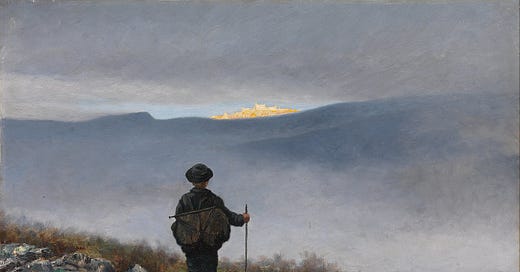



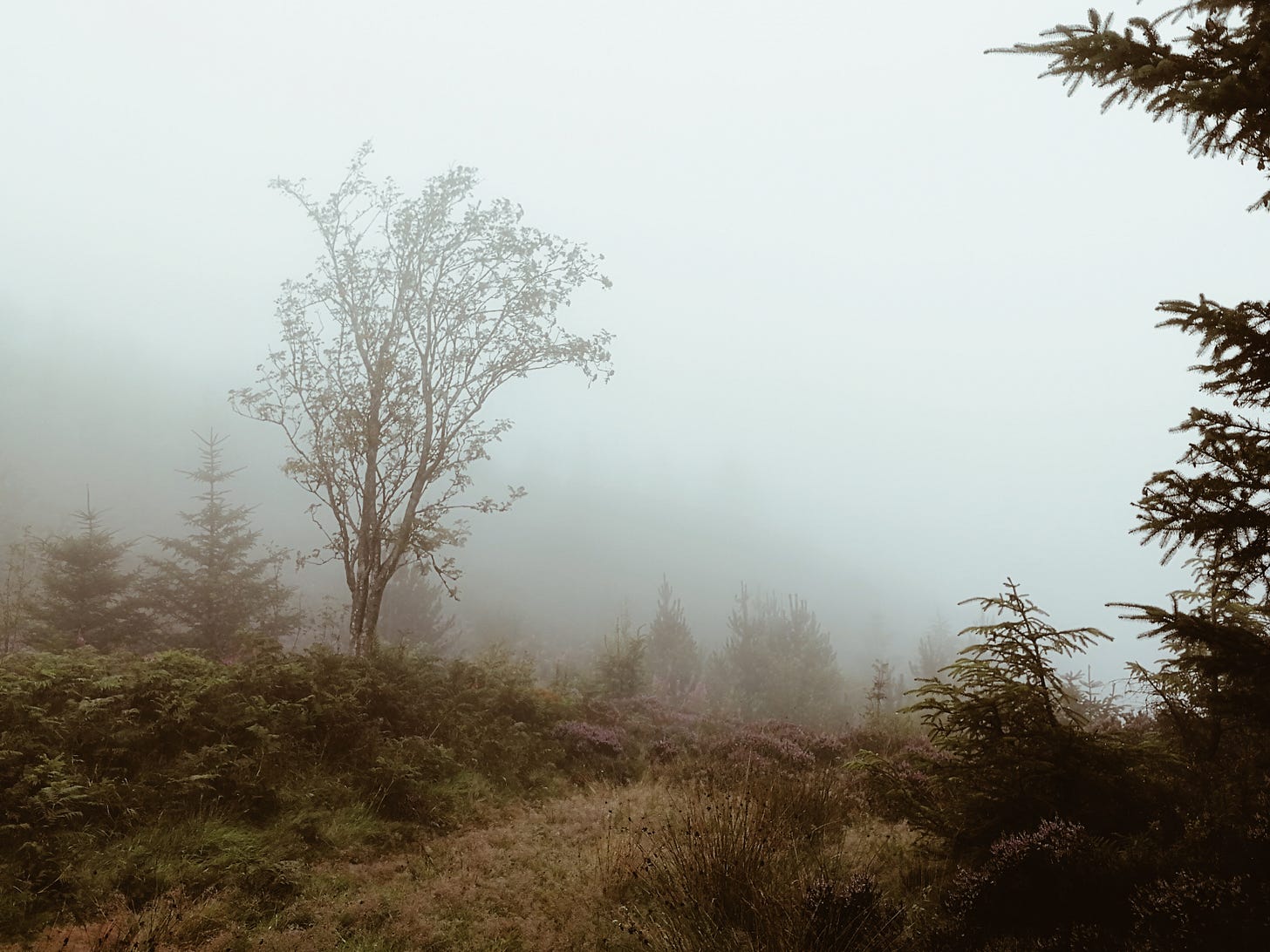
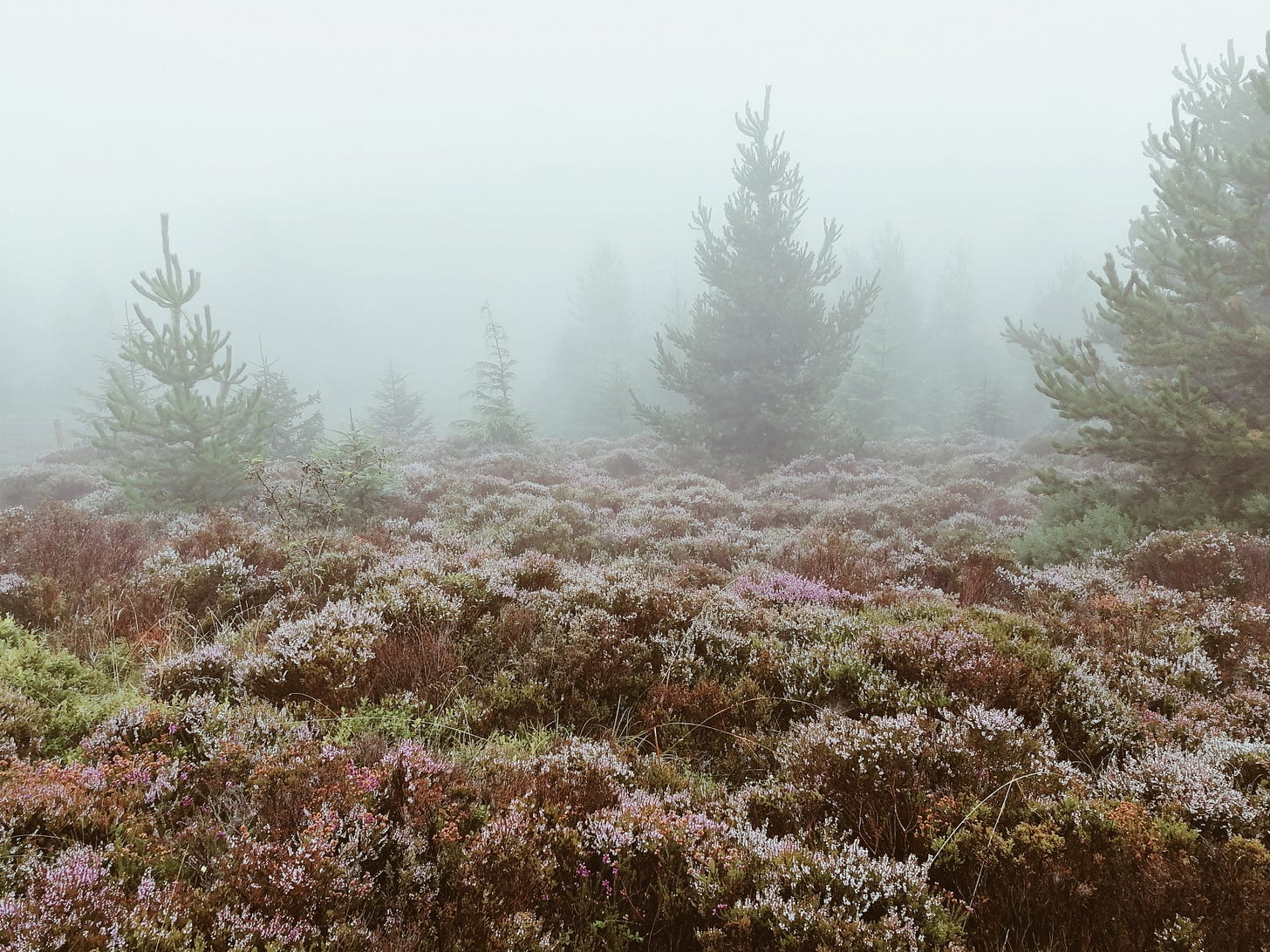

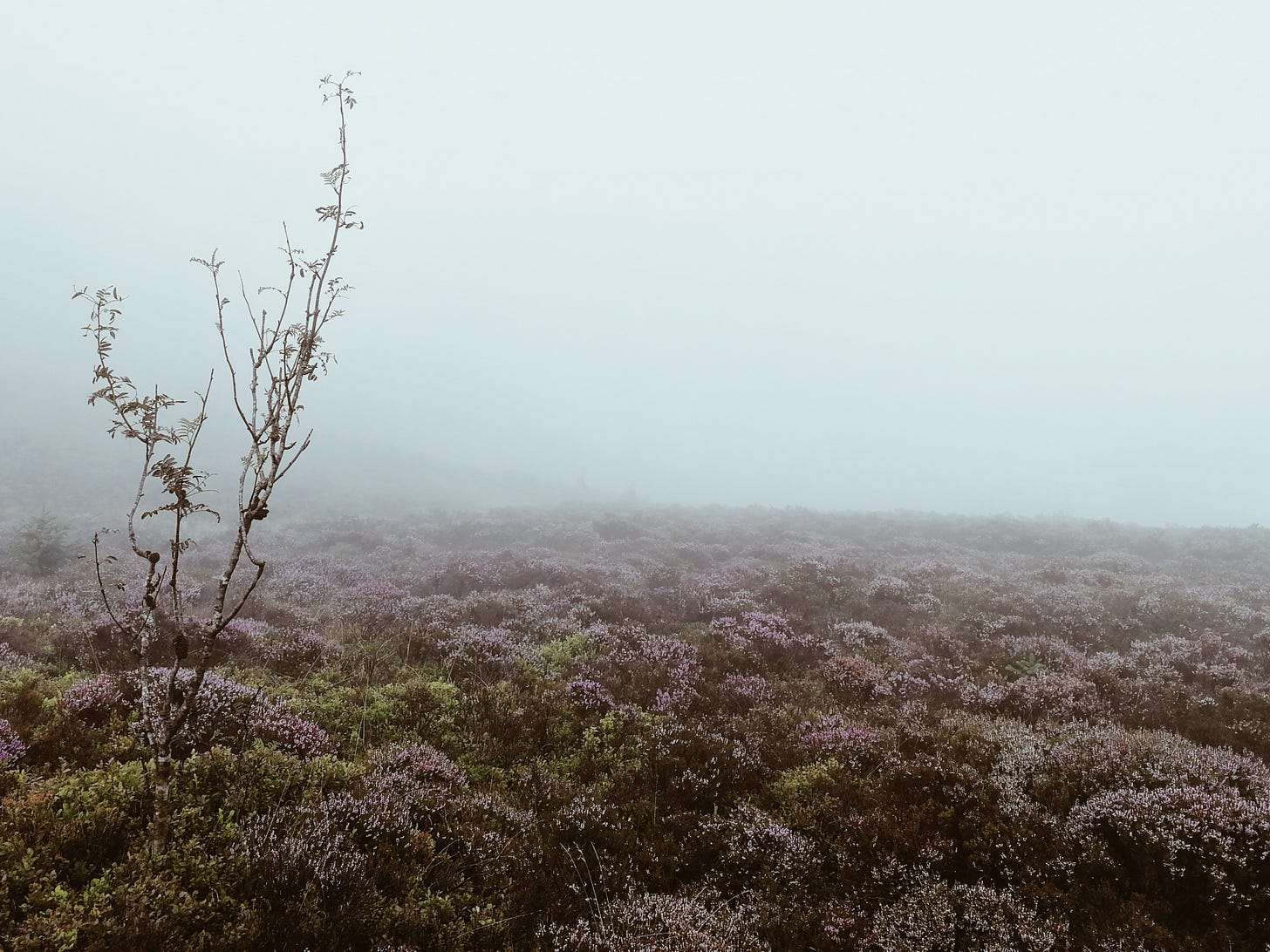
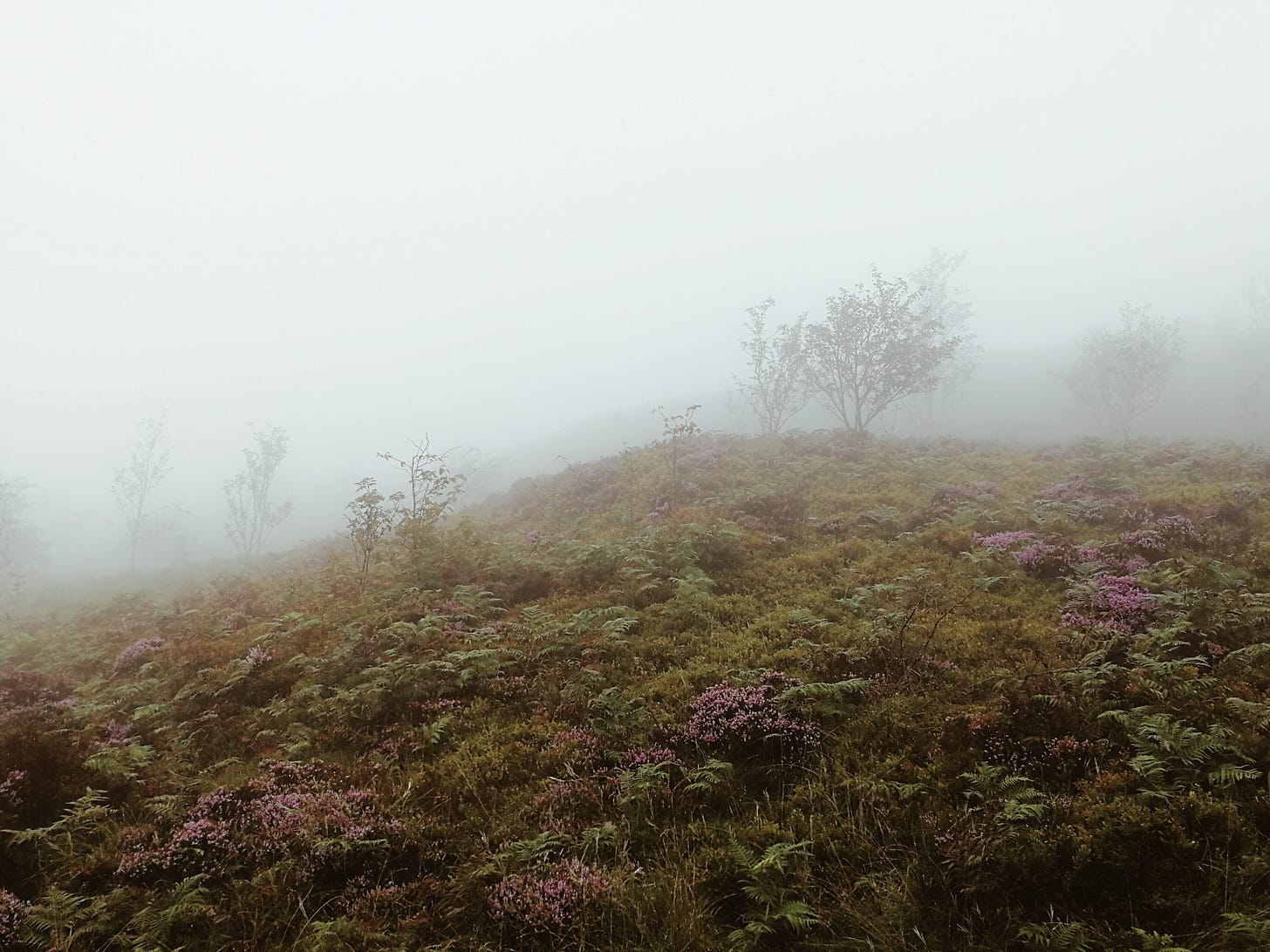
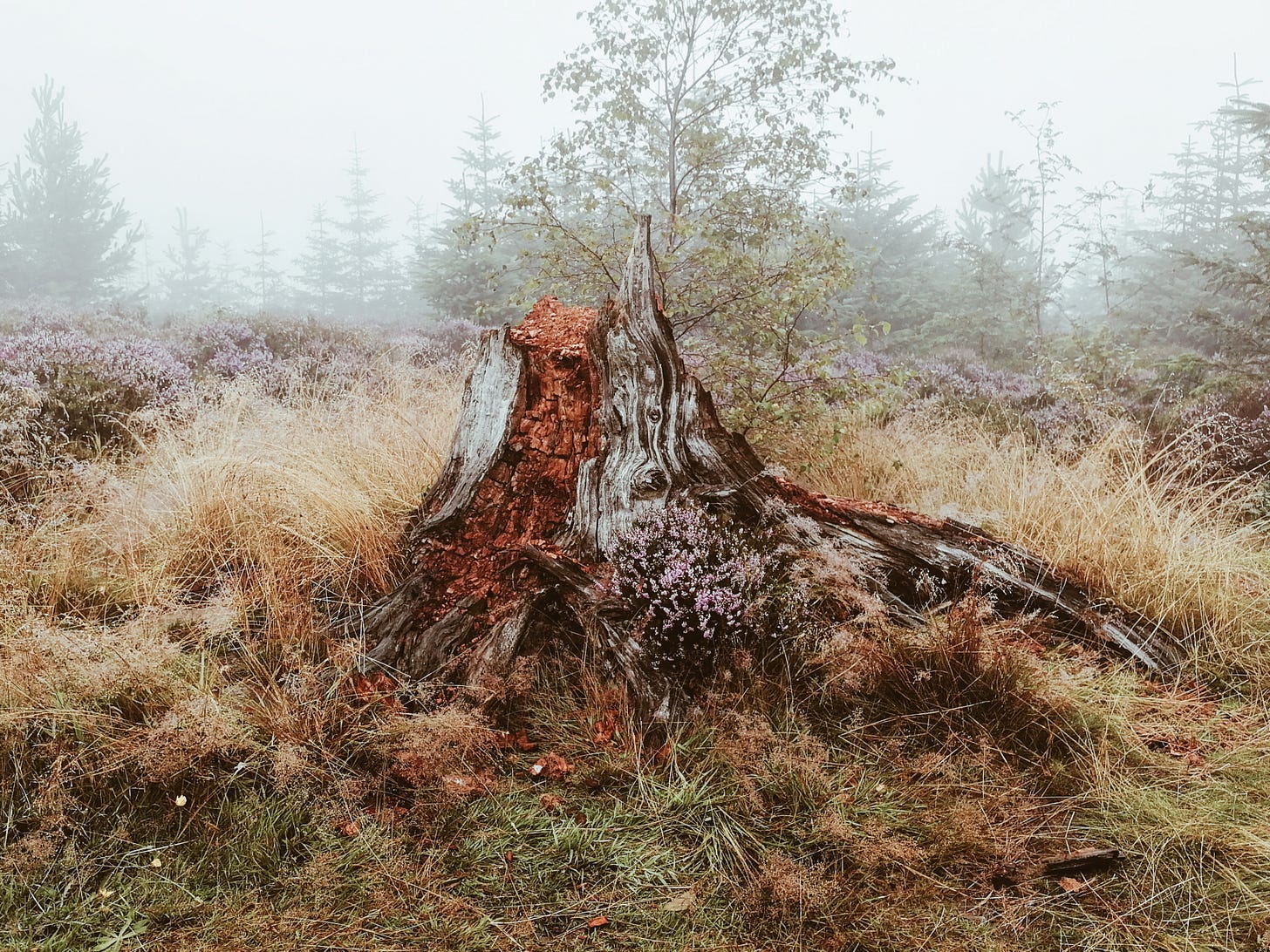

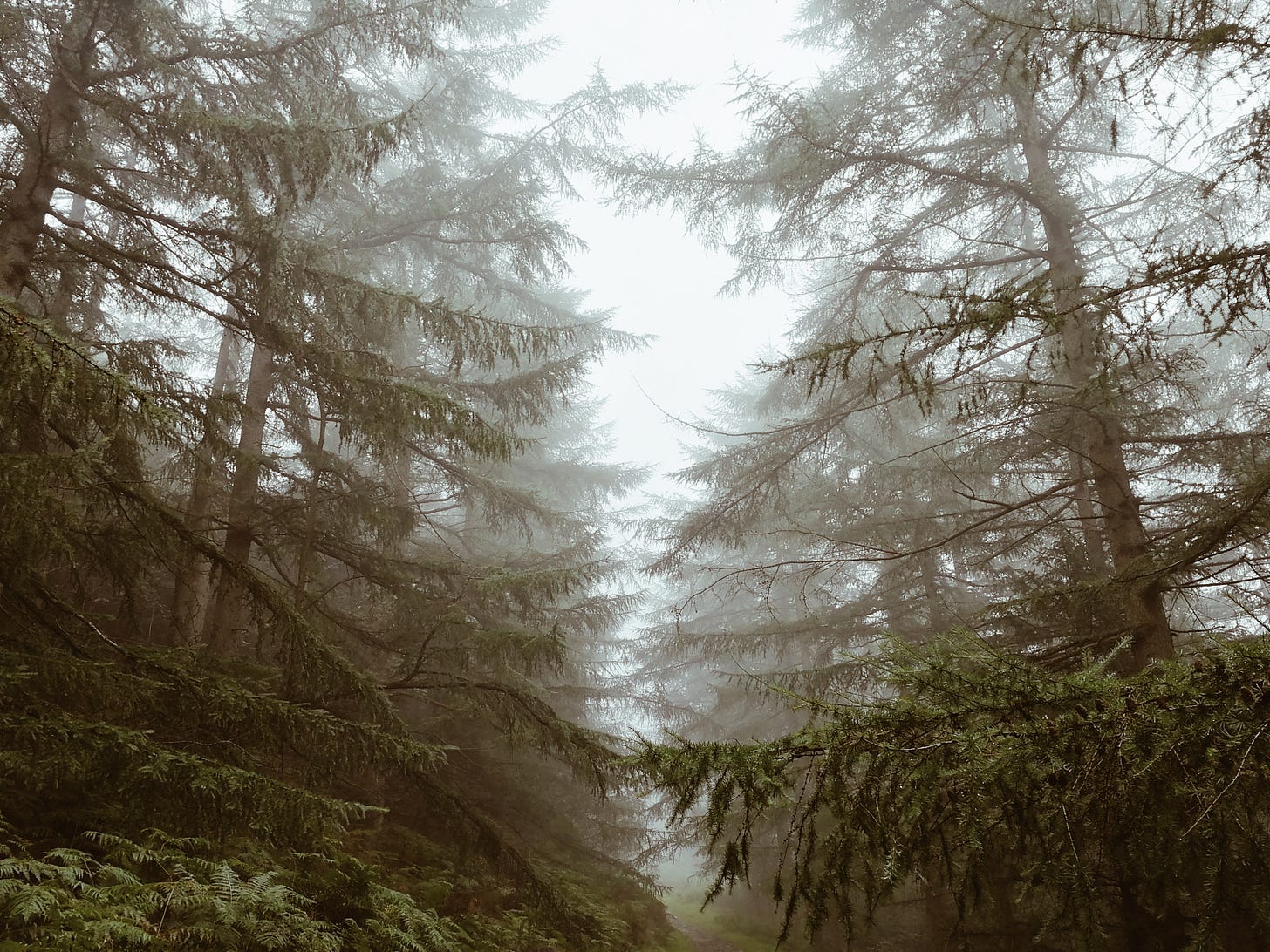

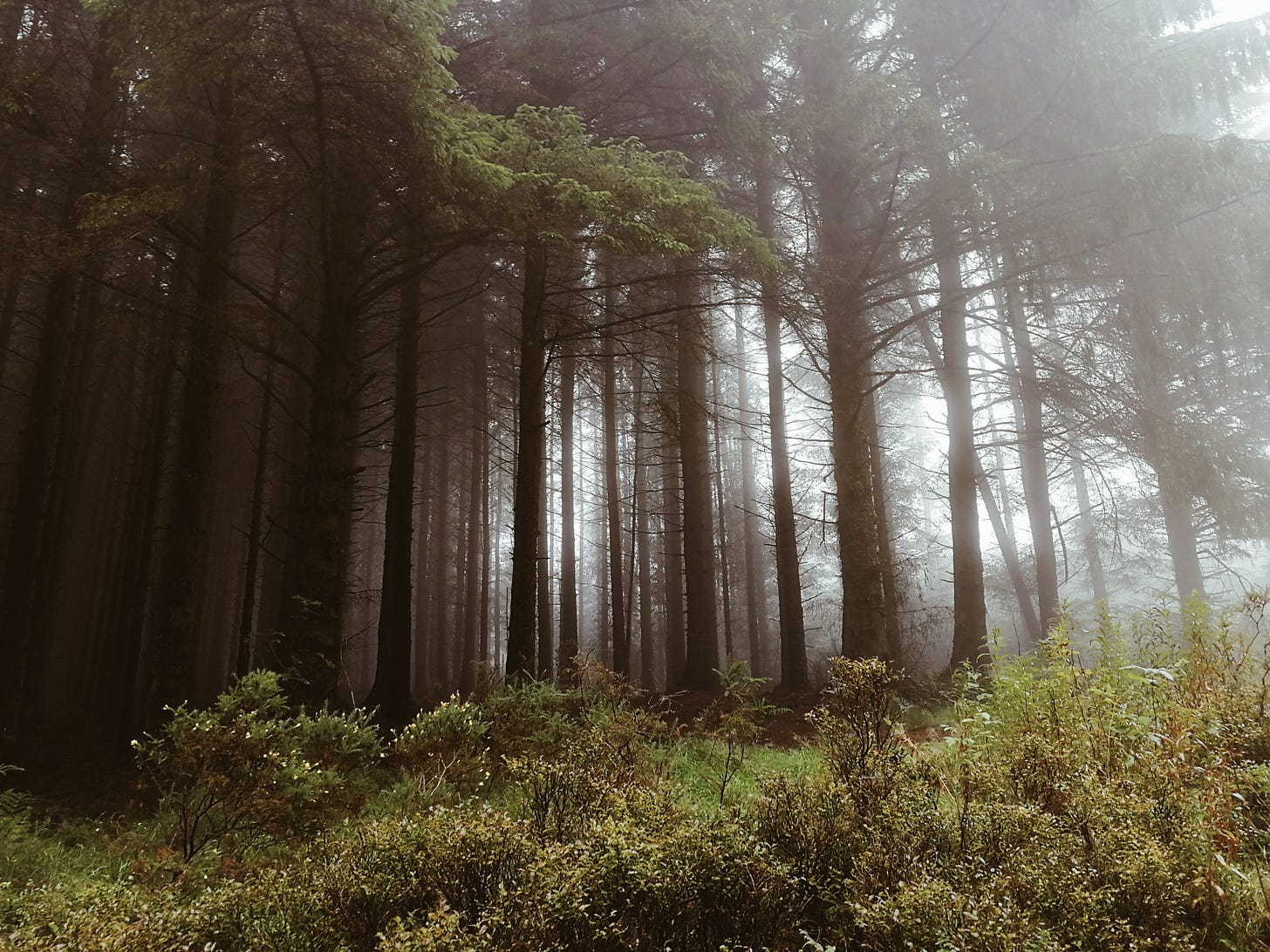
The subtitle of this literally blows my mind! Can’t wait to sit down and have a proper read through!!
I clicked on this piece distracted and hurried, and was so quickly drawn in, slowed, captivated. I’ve felt what you write about, even seen it before—that flare in the minds eye that leads you inward. I’m still in that place of detached perception quite often, as if I’m showing the beauty before me to someone who isn’t there. If rare moments, I get it back. Thanks for writing.